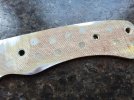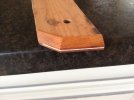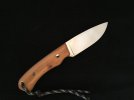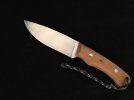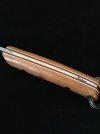Stacy, it all depends on the skill of the person doing, which comes down to experience level. I'm paid millions of dollars to make good decisions with regard to some very expensive projects. I take it on a case by case basis, and if something can't be repaired to where it can't be noticed, I agree, it needs to be replaced. I have been amazed at some of the repairs I have seen made though. I will often leave it up to a craftsman. If they tell me they can repair something and end up with a perfect appearance, or make a piece of natural material look better, I let them have at it. We are lucky to work with some really talented craftsman, because at our level of quality and price it's expected. We have some trim carpenters that make 180K+ per year, and they are expected to be at the top of their craft at all times.
Lately we have been working with a lot of natural cherry, and quite a bit of rustic cherry. Improving on natural materials is just part of working with them some times. Some times an otherwise beautiful piece of rustic cherry has one section that is a bit too rustic, but maybe it's in the middle of an otherwise great 20' piece that already been milled to be used as a single piece in a coffered ceiling. It get's improved. If there is any possibility that someone could spot the change it wouldn't be used.
I own some really nice knives from some well known makers. If there had been a noticeable flaw in one of those I would have been surprised and miffed. If there is a repair that I can't discern, I am none the wiser and don't really care as long as it lasts.

